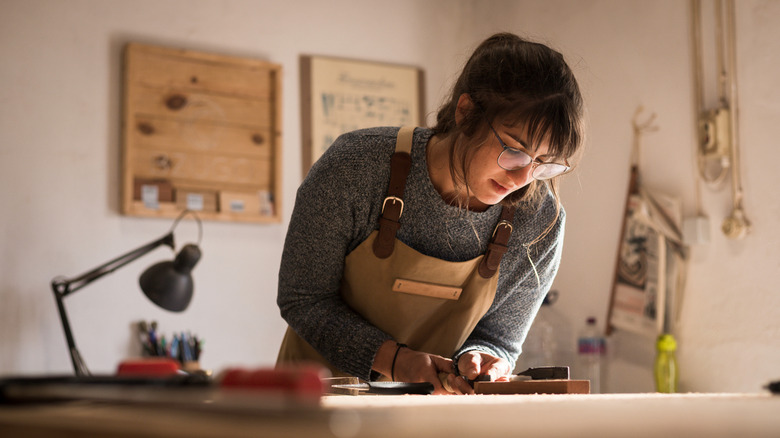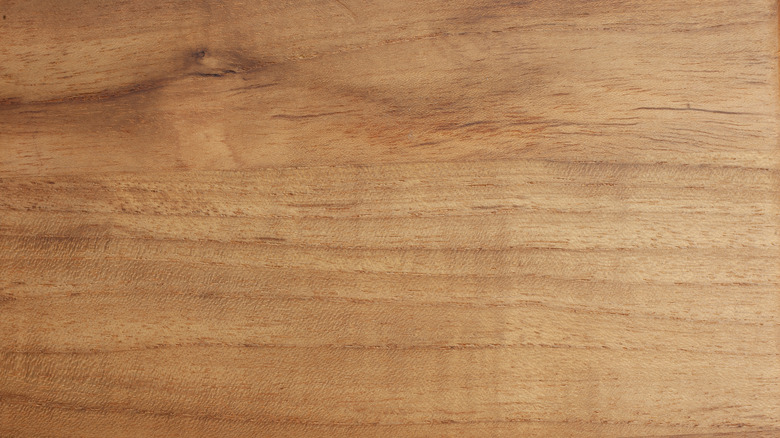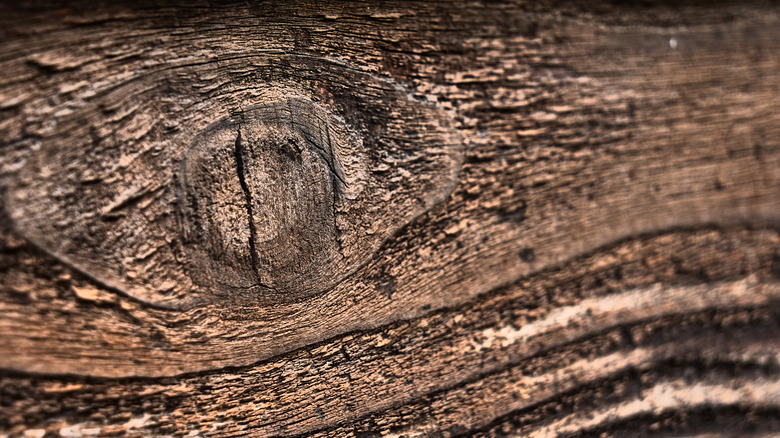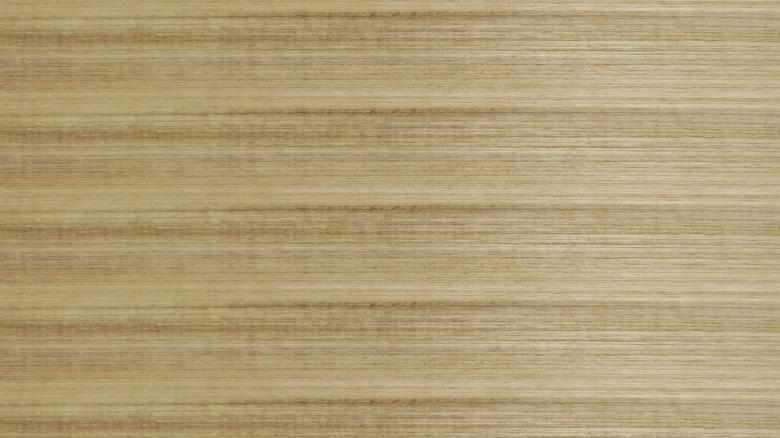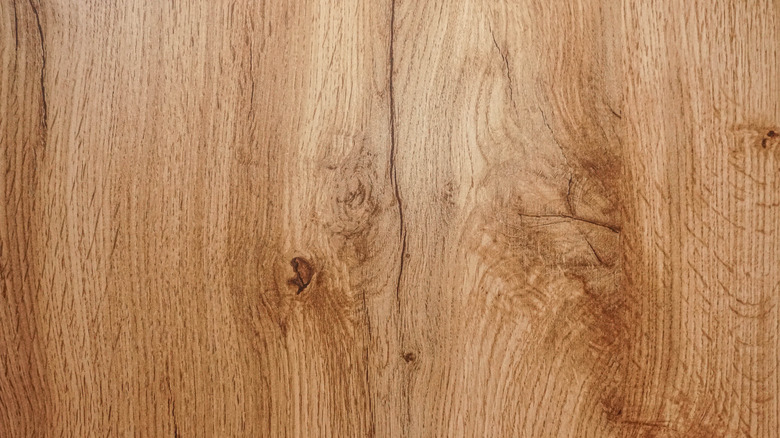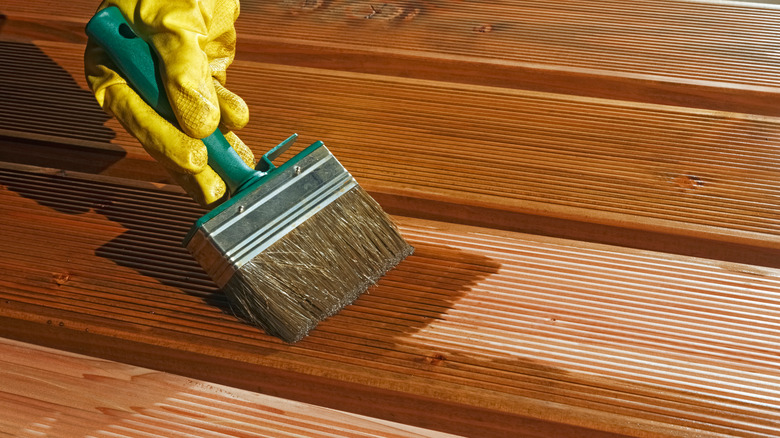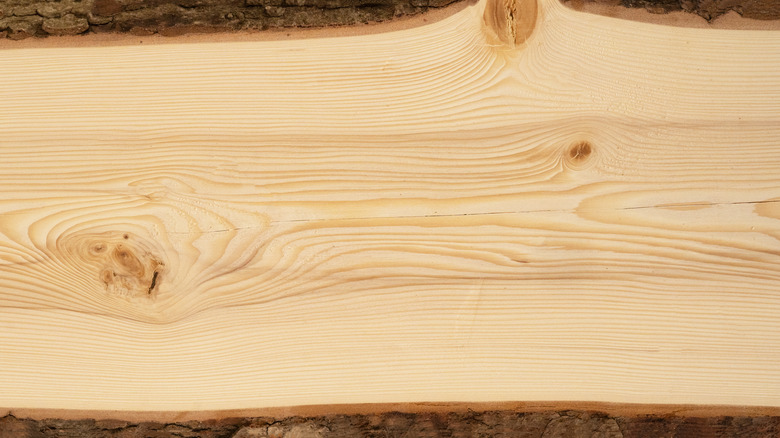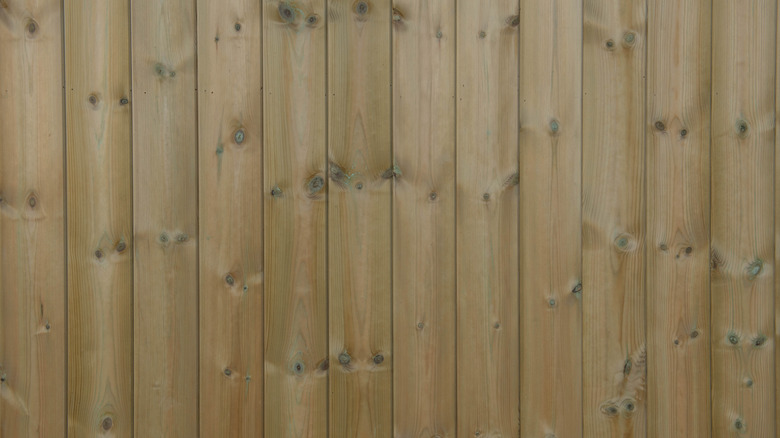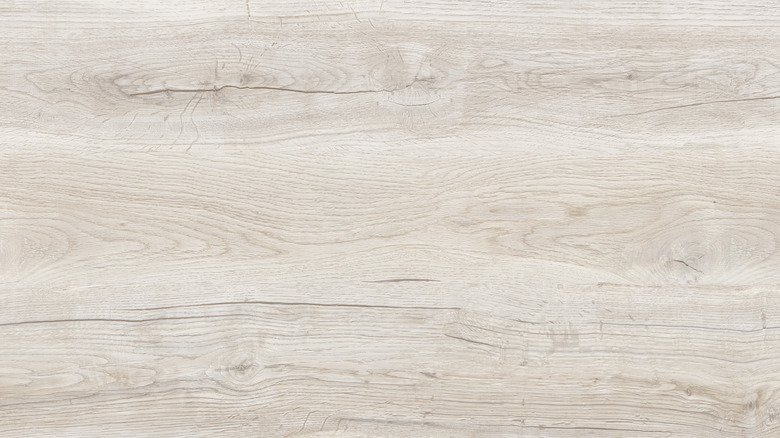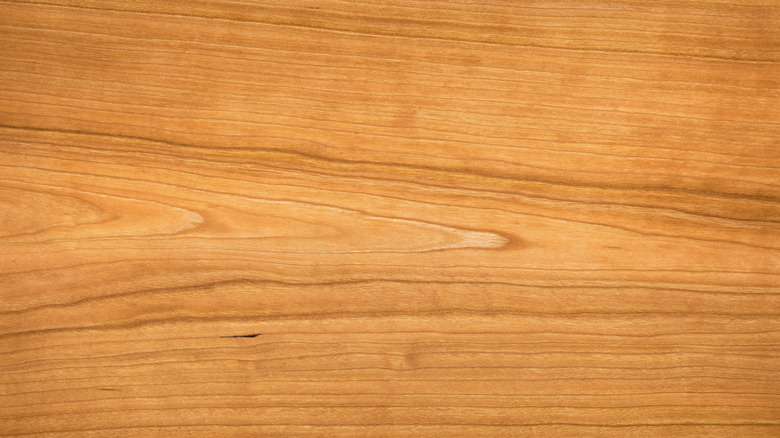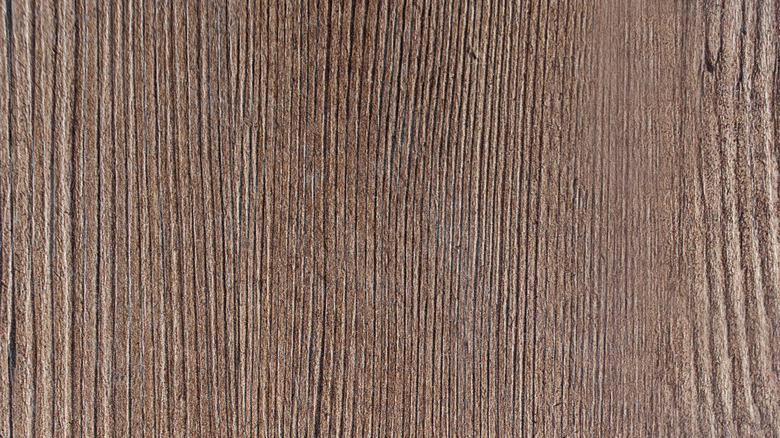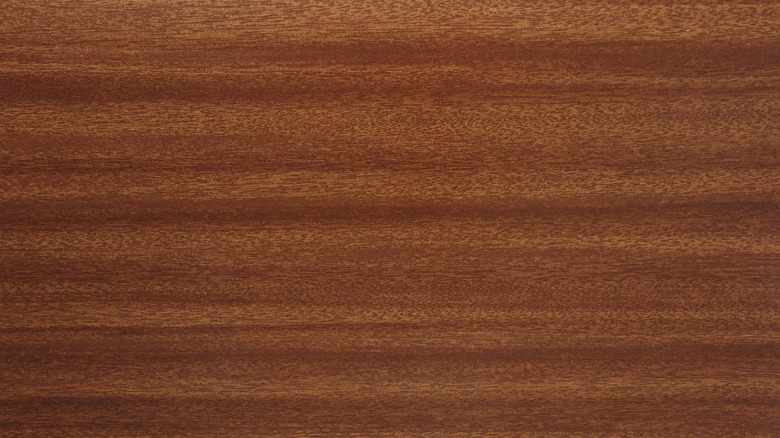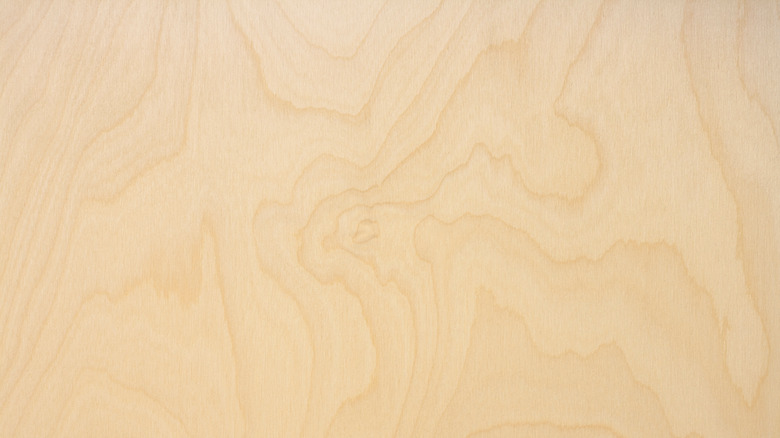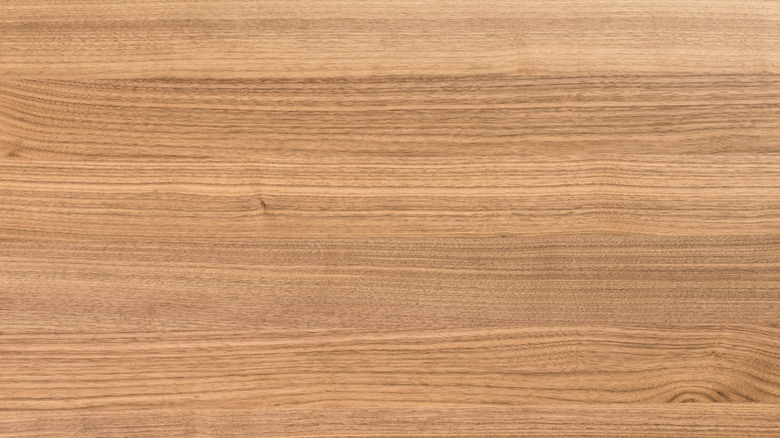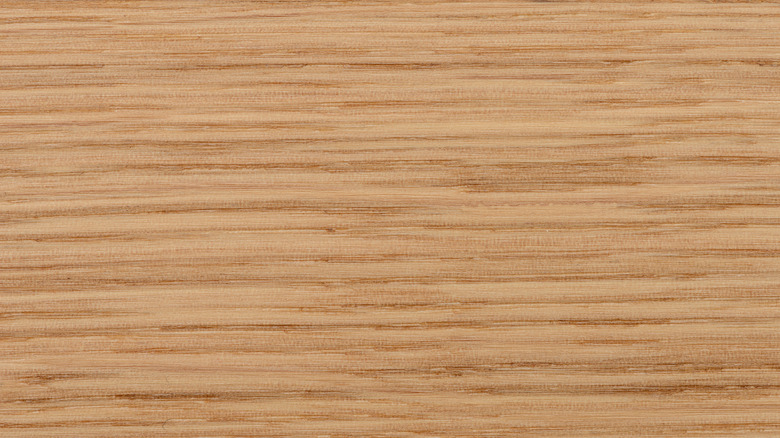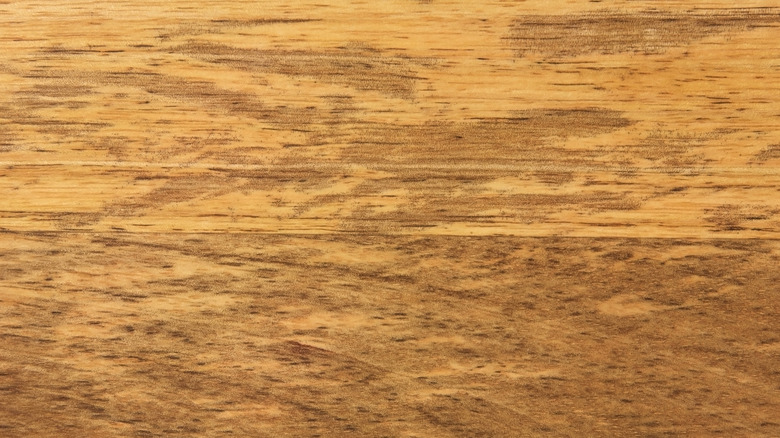15 Types Of Wood That Are Easy To Build With
Dear woodworkers, consider this article a curation of the best types of wood for building. Generally speaking, there are three categories of timber: softwood, hardwood, and engineered wood, each offering different and unique properties. Per Builderology, softwood refers to wood from conifer trees. Since these trees are evergreen, they mature quickly, making their timbers sustainable, affordable, and widely available. Hardwood, on the other hand, is milled from deciduous trees. Because such trees lose their leaves annually, they are slow-growing, and their timbers are typically more expensive and denser than softwoods.
For this article, we will focus heavily on softwood and hardwood, broadly classified as natural woods. We will highlight the application and woodworking properties that some members of this large family bring to the construction table. After reading this piece, you will be able to determine the best kind of natural wood for all your building projects around the house.
1. Pinewood
Pine grows in most parts of the Northern Hemisphere. Its lumber presents with a white or yellow color, but the hues vary from light brown to pale yellow. As a softwood, pinewood is lightweight and features straight grains with visible dark brown growth rings. It is easy to shape, stain, drill, and carve. Because pinewood resists shrinkage, warping, and swelling, most woodworkers consider it a versatile wood. Per Lampert Lumber, you can adopt this softwood for various building projects, including construction lumber, moldings, windows, and doors. Pinewood makes excellent furniture since it has a natural color that can brighten any interior.
2. Cedarwood
As most carpenters would agree, cedar is one of the best types of wood for building. It is perfect for outdoor furniture due to its extreme resistance to decay and adverse weather conditions. Cedar emits sweet aromatic notes, which act as a natural repellent against pests and moths. For this reason, it is typically used for or as lining for storage boxes, drawers, chests, and closets. You will recognize this knotty softwood by its warm reddish-brown or pinkish-red color and straight grains. According to Designing Buildings, cedar is the best wood for interior paneling since it is non-warping.
3. Teak wood
Teak wood has high oil content and is valued for its incredible resistance to pests, decay, and water. This explains why it is the go-to wood for watercraft construction, veneers production, indoor and outdoor furniture, exterior construction, and structural woodworking. Though expensive, builders value this hardwood for many reasons. It is heavy, durable, weather-resistant, and non-warping. It also shows a lovely yellow to dark brown color, straight grain pattern, and emits strong notes of leather when freshly milled. Teak, according to AquaTeak, does not burn easily and resists decay better than all the other natural wood products.
4. Oakwood
Experts have recorded over 600 species of oak around the world. It is native to the Northern Hemisphere but grown in the Americas, Asia, North Africa, and Europe, per Liberon. In woodworking, there are two classifications of oak: red and white. Both varieties show visible growth rings and straight grains. As one of the most common types of wood for building, oak is mostly used for household and office furniture. It has moisture-resistant properties and is widely employed in watercraft construction, veneer production, and interior work. It also resists fungi and yeast, making it the preferred wood for outdoor furniture.
5. Firwood
If you need sturdy wood which does not break or distort under pressure, look no further than fir, also known as Douglas Fir. It is harder than most softwoods and has the highest modulus of elasticity value of every softwood native to North America. Bear Creek Lumber describes firwood as straight grain, reddish-brown softwood with a uniform texture. Woodworkers and builders value it for its versatility, strength, and performance. It is primarily used to build doors, frames, plywood, windows, veneer, furniture, and general millwork. Douglas fir is inexpensive and widely available at local home centers.
6. Spruce wood
Spruce is native to the cold and temperate regions of the Northern Hemisphere, per Britannica. It has moderate shrinkage and fine grains that run straight. Spruce is a softwood, primarily used as construction lumber due to its toughness and strength. Even though it has a low resistance to decay, it is lightweight and works well for various woodworking projects. You can use it to construct crates, boxes, and ladders. As one of the best types of wood for building, spruce is perfect for general millwork, cladding, and paneling. For this reason, it is employed when designing sounding boards.
7. Redwood
LiveScience calls redwood "nature's skyscrapers," as the tree can reach more than 350 feet and live over 2,000 years. Rightly so, timber from redwood continues its sturdy and durable legacy. It is perfect for any outdoor application due to its resistance to adverse weather, moisture, insects, and decay. Redwood is non-warping and relatively soft. It presents a lovely pinkish-brown to deep reddish color that can be left unpolished, painted, or stained. Typical uses of redwood include outdoor furniture, veneer, decking, construction lumber, beams, wood trim, and posts. It is also used to design specialty items like musical instruments.
8. Maple wood
Maple is a hardwood native to Asia and considered one of the best types of wood for building. It originates from the Acer saccharum and Acer nigrum, which produce hard maple and soft maple. According to Vermont Woods Studios, hard maple is fine-textured, straight-grained, shock-resistant, split-resistant, and heavy, making an excellent choice for flooring, millwork, and furniture. Soft maple shares the same properties as hard maple, except it is not as hard. This makes it easy to work when using hand or powered tools. Maple wood ranges from a light cream to a pale reddish-brown color.
9. Cherry wood
This is hardwood milled from the deciduous prunus serotina. It is exclusive, expensive, and highly sought after for its durability and unique visual appeal. Cherry woods are hard to find for several reasons, but chiefly because cherry trees take a long time to mature. Though considered hardwood, cherry wood is the most flexible of them all, explaining why it is used to build various wood pieces. It works well for intricate and decorative items, as well as solid furniture like cabinets and tables, via Furnishing Tips. Cherry wood is beautiful on its own and does not require staining.
10. Hemlock wood
Also known as Tsuga, hemlock grows in the United States, Eastern Asia, Canada, and England. It is durable and grows tougher with age, making it one of the best types of wood for building. Because hemlock wood has moisture and water-resistant properties, it is popularly used to construct houses, furniture, watercrafts, aircrafts, light frames, and flooring. This softwood is also sturdy, thick, and tough, resisting cracks and dislodgement when being worked with powered or hand tools. Sherwood Lumber shares that homeowners can purchase and use hemlock wood for subflooring, doors, joinery, boards, planks, and pallets.
11. Mahogany
Mahogany, also known as Honduras Mahogany, has a hardness of 2, on a scale of 1 to 5. It is a hardwood that carves exceptionally well and impresses with a natural reddish-brown to a deep-red color that can complement any room. This explains why it is mostly used for furniture. Mahogany also stains and finishes well, typically needing just a few coats of oil. The Wood Database describes mahogany as strong hardwood with a uniform pore structure and decent rot resistance. Pro tip: Find a decent lumberyard when looking to buy mahogany. Local home centers rarely have it in stock.
12. Birchwood
Birchwood is one of the best types of wood for building since it holds screws, nails, and glue really well, according to SF Gate. It is closely related to oak, though harder, and typically used to construct high-end furniture and a variety of wood products. We love birchwood because it is an affordable hardwood that is stable, durable, and easy to work with. It also makes high-quality plywood and veneers that can be purchased from your local home improvement store. Birchwood can get blotchy making it incredibly hard to stain, so you may want to use paint instead.
13. Walnut wood
Walnut wood is very expensive, and as Circle Furniture explains, it is mainly due to natural limitations like size and availability. A mature walnut tree does not grow as high or wide as other hardwoods, therefore it does not produce an abundance of timber. This makes its lumber premium wood since it is rare and highly sought after. Fortunately, walnut wood does not disappoint. It is straight-grained, fine-textured, and has a dark chocolate brown color. It is also non-warping, strong, durable, and hard. You will love how it possesses all the woodworking qualities needed to create beautiful pieces.
14. Ashwood
Ashwood is without a doubt, one of the best types of wood for building. It is valued for its strength, elasticity, and how it gives off a stunning, natural finish. Ashwood offers a flexibility that makes it effortless to work on, whether you are using nails, screws, glue, or hand or powered tools. Unfortunately, it is not readily available at most local home centers — only at large lumber yards, via Dummies. Ashwood may be white to pale brown, but it always has prominent, straight grain. It is a good substitute for white oak.
15. Mango wood
Rustic Furniture Outlet says that because mango trees are dense, heavy, and sturdy, mango wood can tolerate massive weights. This is why it is used to build nesting tables, bedroom furniture, bookshelves, kitchen cabinets, entertainment units, and living room furniture. Mango wood is also water-resistant, thanks to its tropical origins, and does well outdoors. You will recognize this hardwood by its attractive grain pattern, which offers different colors, ranging from light to dark shades of brown with tinges of light pink or green. Use mango wood to build all wood pieces designed to sustain or support large weights.
